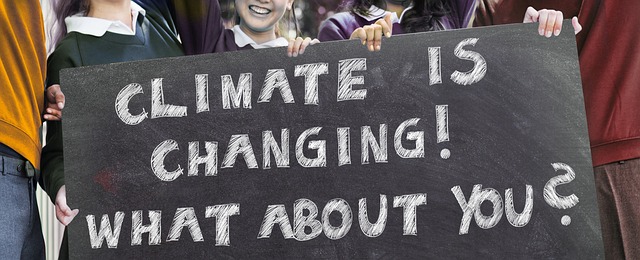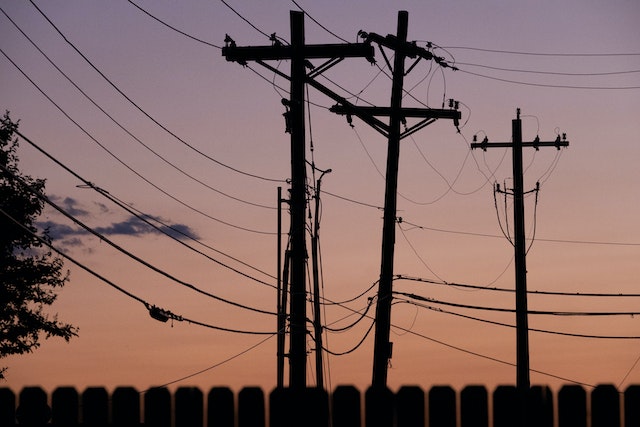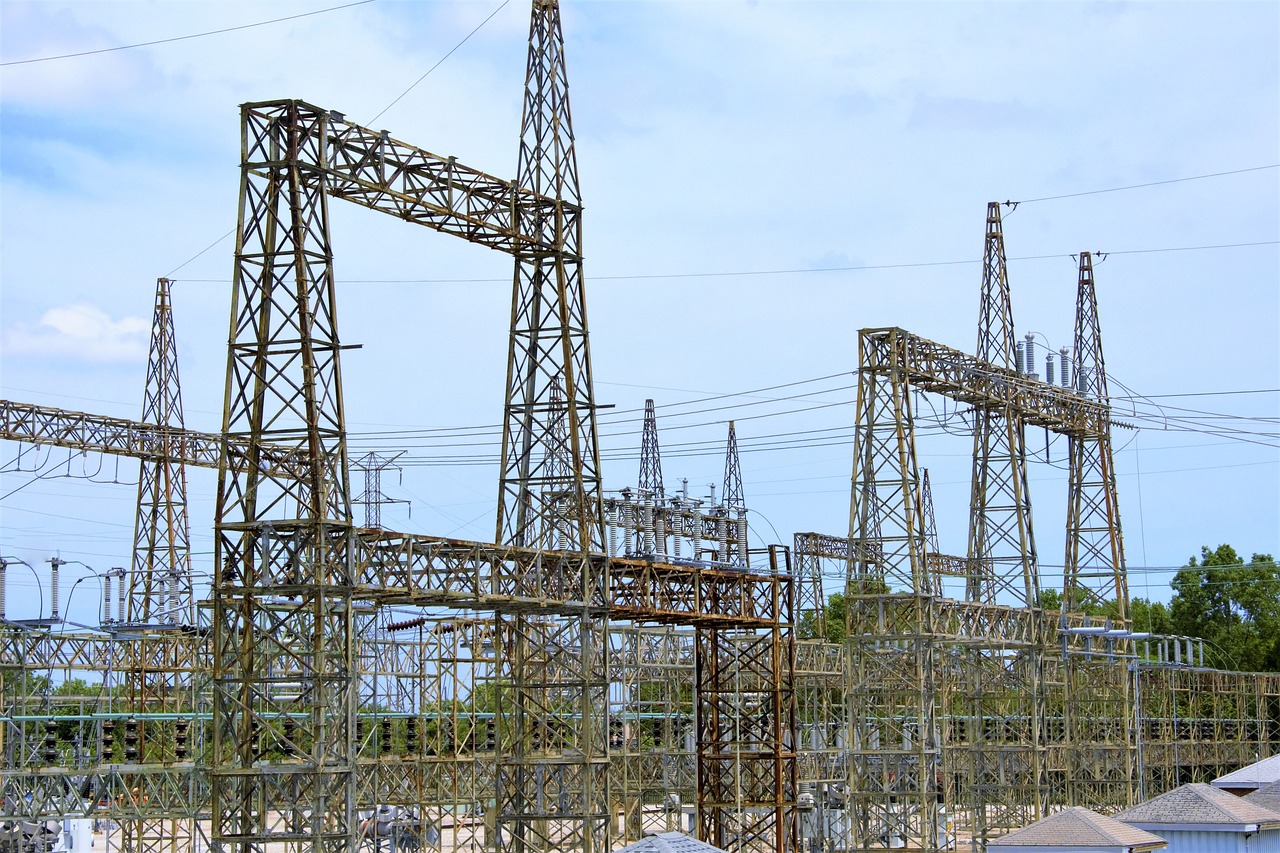How To Integrate Renewable Energy into Existing Power Grids
This article delves into the intricacies of how to Integrate Renewable Energy into Existing Power Grids like solar panels, wind power, and more into our existing power systems.
The transition from fossil fuels to renewable energy sources is not just a trend; it’s a necessity.
As the world grapples with the dire consequences of climate change, the problem of how to integrate renewable energy into existing power grids has become a focal point for grid operators and energy enthusiasts alike.
However, this integration is not without its challenges.
The Growing Importance of Renewable Energy Sources
In recent years, the shift toward renewable energy technologies has been monumental. With the adverse effects of climate change becoming more evident, the urgency to reduce carbon emissions and embrace cleaner energy sources has never been higher.
Solar and Wind Power: Solar panels and wind turbines have become synonymous with renewable energy production.
Also Solar energy, harnessed through solar power systems, and wind energy, captured by wind turbines, are leading the charge in the fight against climate change.
The Decline of Fossil Fuels: Natural gas and other fossil fuels have been the backbone of power generation for decades. However, their contribution to greenhouse gas emissions has expedited the shift towards renewable energy sources.
Challenges in Integrating Renewable Energy into Power Grids
How to integrate renewable energy into existing power grids and infrastructure is no small feat. Here are some of the biggest challenges faced by system operators:
Variable Renewable Energy: The distributed nature of these energy resources, like solar systems and wind energy, means they are often dependent on weather conditions. This variability can pose challenges for grid stability.
Energy Storage Systems: With renewable energy production often peaking during certain hours, energy storage technologies play an important role in ensuring a consistent power supply.
However, significant investments are required to develop advanced technologies that can store energy efficiently.
Grid Operations and Stability: Grid operators are tasked with ensuring grid stability, especially with the influx of renewable sources. The integration of solar panels, wind turbines, and other renewable energy technologies can sometimes disrupt traditional grid operations.

4 FAQ’s About The Integration of Renewable Energy into Power Grids
Why is the integration of renewable energy into power grids crucial for combating climate change?
The integration of renewable energy into power grids is paramount for several reasons:
Reduction of Carbon Emissions: Traditional power generation methods, primarily reliant on fossil fuels like coal and natural gas, release significant amounts of carbon dioxide and other greenhouse gases. These emissions are primary contributors to global warming. By integrating renewable energy sources, we can significantly reduce these emissions. Slowing the pace of climate change.
Sustainable Energy Future: Renewable energy sources, such as solar and wind, are inexhaustible. Unlike fossil fuels, which are finite, renewable sources ensure a sustainable energy future. Reducing our dependency on depleting resources.
Public Health and Environment: Burning fossil fuels releases pollutants that can harm public health and the environment. Transitioning to cleaner energy sources can reduce the incidence of respiratory ailments, cardiovascular problems, and other health issues linked to pollution.
How do solar panels and wind turbines contribute to renewable energy production?
Solar Panels: Solar panels, or photovoltaic cells, convert sunlight directly into electricity. When sunlight hits the panels, it excites electrons in the cells, creating an electric current. This electricity can then be used immediately or stored for later use. With advancements in solar technology and decreasing costs, solar energy has become a significant contributor to the global energy mix.
Wind Turbines: Wind turbines harness the kinetic energy of moving air to generate electricity. As wind flows over the blades of a turbine, it causes them to lift and rotate. This rotation drives a generator, which then produces electricity. Wind energy, especially offshore wind farms, has seen substantial growth in recent years due to its efficiency and decreasing installation costs.
The Integration of Renewable Energy into Power Grids
What are the technical challenges faced by grid operators when integrating renewable sources?
Intermittency and Predictability: Renewable sources like solar and wind are intermittent, meaning they don’t produce energy all the time. This unpredictability can make it challenging for grid operators to balance supply and demand.
Infrastructure Upgrades: Many existing power grids were designed long before renewable energy became a viable option. Integrating these new energy sources often requires significant upgrades to the existing grid infrastructure.
Energy Storage: Due to the variable nature of renewable energy, there’s a need for efficient energy storage solutions. To ensure power is available even when the sun isn’t shining or the wind isn’t blowing.
Frequency and Voltage Control: Renewable energy sources can introduce fluctuations in the grid’s frequency and voltage, which can affect the stability and reliability of the power supply.
How do energy storage systems play a role in ensuring a consistent power supply?
Energy storage systems are pivotal in bridging the gap between energy production and consumption.
They store excess energy produced during peak production times (like sunny afternoons for solar or windy days for wind energy).
And release it during periods of high demand or low production. This ensures a consistent power supply, mitigating the challenges posed by the intermittent nature of renewable energy sources.
Advanced technologies, like lithium-ion batteries and pumped hydro storage, are making energy storage more efficient and cost-effective.
The Role of Advanced Technologies in Renewable Energy Integration
How to integrate renewable energy into existing power grids is a complex process, but advanced technologies are paving the way for smoother transitions. Here’s how:
Smart Grid Technologies: These are modern electricity supply networks that use digital communication technology to detect and react to local changes in usage. Smart grids can predict and intelligently respond to the behavior and actions of all users connected to them. Ensuring efficient energy distribution.
Electric Vehicles (EVs): EVs are not just a mode of transportation; they can also act as mobile energy storage units. With vehicle-to-grid technology, EVs can feed electricity back into the grid during peak demand times, helping to balance the grid.
Net Metering: This system allows residential and commercial customers who generate their own electricity from solar power. Or other renewable energy sources to feed electricity they do not use back into the grid. This not only reduces the strain on power grids but also benefits consumers through reduced electricity bills.
Virtual Power Plants: These are networks of decentralized, medium-scale power generating units. Such as wind farms, solar parks, and Combined Heat and Power (CHP) units, as well as flexible power consumers and batteries. They’re integrated and controlled by a central IT system, ensuring optimal energy supply.
The Economic Implications of Renewable Energy Integration

To integrate renewable energy into existing power grids is not just an environmental imperative but also an economic one. Here’s why:
Job Creation: The renewable energy sector, especially solar and wind, has been a significant source of job creation in recent years. From manufacturing to installation and maintenance, the industry offers a wide range of employment opportunities.
Energy Security: Relying on renewable energy reduces dependency on energy imports, ensuring a more stable and predictable energy supply. This is particularly crucial for countries that heavily rely on energy imports, as it can significantly reduce their trade deficits.
Cost Savings: In many regions, renewable energy, especially wind and solar, has become the cheapest source of new electricity generation. As technology advances and economies of scale come into play. The cost of renewable energy is expected to continue dropping, leading to further savings for consumers.
Public Acceptance of Renewable Energy
While the technical and economic aspects of renewable energy integration are crucial, public acceptance is equally important.
The transition to a clean energy future requires collective effort, and public support is paramount for the following reasons:
Infrastructure Development: Building new renewable energy facilities, be it solar farms in new remote locations or offshore wind installations, often requires public approval. Ensuring the local communities understand the benefits and are on board is essential for smooth project execution.
Policy and Regulatory Framework: Public support can influence policy decisions. A favorable regulatory framework can accelerate the adoption of renewable energy. From providing incentives for solar PV installations to setting ambitious renewable energy targets.
Investment in Research: Public acceptance can drive government and private sector investment in research interests related to renewable energy technologies. This can lead to breakthroughs that make the integration process more efficient and cost-effective.
Conclusion
The challenges of how to integrate renewable energy into existing power grids are multifaceted. But with the collective effort of policymakers, industry stakeholders, and the public, a sustainable and clean energy future is within reach. As technology advances and public awareness grows, the transition to a world powered predominantly by renewable sources becomes not just a possibility but an impending reality.
The Global Perspective on Renewable Energy Integration
As the urgency to combat climate change intensifies, countries worldwide are recognizing the importance of renewable energy. Here’s a snapshot of the global efforts:
United States: The U.S. has made significant strides in renewable energy production, especially in solar and wind energy. Furthermore, with policies promoting electric vehicles and tax incentives for solar installations, the country is rapidly moving towards a greener future. Plus, grid operators are also investing in advanced technologies to ensure system stability as renewable sources become more prevalent.
Europe: European countries, especially those in the Northern region, have been pioneers in wind energy. Interestingly, Offshore wind farms are becoming increasingly common, harnessing the power of the strong coastal winds. Also, The European Union’s ambitious targets for reducing carbon emissions have further accelerated the shift towards renewable sources.
Asia: Countries like China and India, with their vast populations and growing energy demands, are investing heavily in renewable energy technologies. Interestingly, solar farms spanning vast areas and wind installations in remote locations are becoming a common sight. Also, the challenge lies in integrating these massive energy sources into the existing grid infrastructure efficiently.
The Future of Renewable Energy Integration

Firstly, the path to how to integrate renewable energy into existing power grids is laden with challenges, but the future looks promising. Here’s what we can expect:
Decentralized Energy Systems: With the distributed nature of renewable energy resources, we’re moving towards a more decentralized energy system. Plus, localized energy production, be it through rooftop solar installations or community wind farms, will reduce the strain on central power grids.
Advanced Energy Storage: As the need for efficient energy storage grows, we can expect significant advancements in battery technologies. From solid-state batteries to innovations in pumped hydro storage, the future of energy storage looks bright.
AI and Machine Learning: These technologies will play a pivotal role in grid management. Surprisingly, predicting energy demand, optimizing energy distribution, and ensuring grid stability will become more efficient with the aid of AI algorithms.
FAQ’s Continued
How are different countries approaching the challenge of renewable energy integration?
Different countries, based on their geographical, economic, and political contexts, have unique approaches to renewable energy integration:
Policy and Incentives: Many nations offer tax breaks, subsidies, and incentives to promote the adoption of renewable energy technologies. For instance, Germany’s Feed-in Tariff system has been instrumental in boosting solar and wind energy production.
Research and Development: Countries like Japan and South Korea are heavily investing in R&D to innovate and improve renewable energy technologies, ensuring they are more efficient and cost-effective.
Infrastructure Development: Developing nations, such as India and parts of Africa, are focusing on building the necessary infrastructure, like solar parks and wind farms, to harness renewable energy on a large scale.
Public Awareness Campaigns: Many countries are running public awareness campaigns to educate citizens about the benefits of renewable energy, encouraging them to adopt sustainable practices in their daily lives.
What technological advancements can we expect in the future to aid in the integration process?
The future holds a plethora of technological advancements that will facilitate the integration of renewable energy:
Next-Gen Batteries: Advancements in battery technology, such as solid-state batteries, will offer higher energy densities and longer lifespans, making energy storage more efficient.
Grid-Interactive Buildings: Buildings in the future will not just consume energy but also produce and store it, interacting with the grid in real-time to optimize energy usage.
AI-Powered Grid Management: Artificial Intelligence will play a pivotal role in predicting energy demand, optimizing distribution, and ensuring grid stability.
Wireless Energy Transfer: While still in its nascent stages, the concept of transferring energy wirelessly could revolutionize how energy is distributed and consumed.
FAQ’s About The Integration of Renewable Energy into Power Grids
How will the role of grid operators evolve as renewable energy sources become more prevalent?
As renewable energy sources become more dominant:
Proactive Management: Grid operators will transition from a reactive role to a more proactive one, predicting and managing energy flows in real-time.
Integration of Advanced Technologies: Operators will need to be adept at integrating and managing advanced technologies, from AI-driven management systems to advanced energy storage solutions.
Collaboration with Prosumers: The line between energy consumers and producers will blur, with many consumers also producing energy. Grid operators will need to collaborate with these “prosumers” to optimize energy flow.
Enhanced Security Protocols: With the increased digitization of grid management, operators will need to implement robust cybersecurity measures to protect the grid from potential threats.
Are decentralized energy systems more efficient than centralized ones?
Decentralized energy systems offer several advantages over centralized ones:
Reduced Transmission Losses: Energy produced locally and consumed nearby reduces transmission distances, leading to lower energy losses.
Flexibility and Resilience: Decentralized systems can adapt to local changes in demand and supply more efficiently. They are also more resilient to large-scale outages as failures in one part don’t necessarily affect the entire grid.
Empowered Communities: Localized energy production empowers communities, giving them more control over their energy sources and consumption.
Environmental Benefits: Decentralized systems often rely on renewable sources, leading to reduced carbon emissions.
However, it’s essential to note that the efficiency of decentralized systems can vary based on the technology used, the scale of production, and local conditions. In some contexts, a hybrid approach, combining centralized and decentralized systems, might offer the best results.
The Role of Private Sector and Startups in Renewable Energy Integration

As the global push towards renewable energy intensifies, the private sector and startups play an increasingly pivotal role in driving innovation and accelerating integration:
Innovative Solutions: Startups, with their agility and risk-taking ability, are at the forefront of developing cutting-edge solutions. From advanced energy storage technologies to AI-driven grid management tools, these young companies are reshaping the renewable energy landscape.
Investment and Funding: The private sector’s financial muscle is crucial in propelling the renewable energy sector forward. With significant investments in research, infrastructure, and public awareness campaigns, businesses are playing a central role in the energy transition.
Public-Private Partnerships: Collaborations between governments and private entities can lead to synergistic outcomes. Such partnerships can expedite infrastructure development, policy formulation, and technology adoption.
Challenges in Remote Areas and Developing Nations
While developed nations are rapidly adopting renewable energy, remote areas and developing countries face unique challenges:
Infrastructure Limitations: Many remote areas lack the necessary infrastructure to harness and distribute renewable energy efficiently. This includes not just energy generation facilities but also roads, communication networks, and storage solutions.
Financial Constraints: Developing nations often grapple with limited financial resources, making large-scale renewable energy projects challenging to implement.
Skill and Knowledge Gaps: There’s a need for skilled professionals and knowledge transfer to ensure the successful implementation and maintenance of renewable energy projects in these regions.
The Importance of Global Collaboration
The challenge of climate change is a global one, and so is the solution. Global collaboration can amplify the impact of individual efforts:
Knowledge Sharing: Countries can learn from each other’s successes and failures, adopting best practices and avoiding common pitfalls.
Joint Research Initiatives: Collaborative research can pool resources and expertise, leading to faster and more impactful innovations.
Unified Policy Frameworks: A unified global approach to renewable energy policies can streamline international collaborations, trade, and technology transfers.
FAQs Continued
How are startups revolutionizing the renewable energy sector?
Startups are at the forefront of innovation in the renewable energy sector, bringing fresh perspectives and agile solutions:
Technological Innovations: Many startups are developing cutting-edge technologies, from advanced battery storage solutions to efficient solar panel designs, pushing the boundaries of what’s possible in renewable energy.
Decentralized Solutions: Several startups focus on microgrid solutions, allowing remote areas and individual communities to generate, store, and distribute their own energy, reducing dependency on large-scale grids.
Digital Platforms: With the rise of digital technology, startups are creating platforms for peer-to-peer energy trading, predictive maintenance of renewable energy installations, and real-time monitoring of energy consumption and generation.
Financing Models: Recognizing the financial challenges of renewable energy projects, startups are introducing innovative financing and business models, making it easier for consumers and businesses to adopt renewable energy solutions.
What unique challenges do remote areas face in renewable energy integration?
Remote areas, especially in developing nations, face a set of distinct challenges:
Infrastructure Deficit: Many remote regions lack the basic infrastructure required for large-scale renewable energy installations, such as roads for transportation or advanced grid systems for distribution.
Limited Technical Expertise: These areas often don’t have access to skilled professionals knowledgeable in installing and maintaining renewable energy systems.
Financial Constraints: The initial investment required for renewable energy projects can be prohibitive for remote communities, which often have limited financial resources.
Logistical Challenges: Transporting equipment and materials to remote locations can be challenging and expensive, especially in areas with difficult terrains or limited accessibility.
Cultural and Social Factors: In some remote areas, there might be resistance to new technologies or methods due to cultural or traditional beliefs, necessitating awareness campaigns and community engagement.
FAQs Continued
Why is global collaboration essential in the renewable energy transition?
The transition to renewable energy is a global endeavor, and collaboration amplifies the impact of individual efforts:
Shared Knowledge and Best Practices: Countries and organizations can benefit from shared experiences, adopting proven strategies and avoiding known pitfalls.
Economies of Scale: Collaborative efforts, especially in research and development, can pool resources, leading to faster innovations and cost reductions.
Policy Harmonization: A coordinated approach to renewable energy policies can facilitate international trade, technology transfers, and shared infrastructure projects.
Addressing Global Challenges: Climate change is a global issue, and its effects are felt worldwide. Collaborative efforts ensure that solutions are holistic and address the challenges faced by all nations, regardless of their individual capabilities.
Resource Optimization: Different regions have varying renewable energy potentials. For instance, while one country might have abundant sunlight, another might have strong winds. Collaborative projects can harness these diverse potentials, ensuring optimal utilization of global renewable resources.
Conclusion
The journey to integrate renewable energy into our existing power grids is a testament to humanity’s resilience, innovation, and commitment to a sustainable future.
While challenges abound, the collective will of nations, communities, and individuals worldwide promises a brighter, cleaner future. As we harness the power of the sun, wind, and water, we not only secure our energy needs but also bequeath a healthier planet to future generations.
The path ahead is long and winding, but with collaboration, innovation, and determination, a sustainable energy future is well within our grasp.
The Role of Education in the Renewable Energy Transition

As the world grapples with the challenges of integrating renewable energy, the role of education becomes paramount. Here’s why:
Creating Informed Citizens: An educated populace can make informed decisions, be it in their personal energy consumption habits or in supporting policies that promote renewable energy.
Driving Innovation: With proper education and training, the next generation can lead the way in developing innovative solutions to the challenges faced in renewable energy integration.
Workforce Development: As the renewable energy sector grows, there’s a need for skilled professionals in various capacities, from research and development to installation and maintenance. Educational institutions play a crucial role in training this workforce.
The Interplay of Economics and Renewable Energy
The economic implications of the renewable energy transition are profound:
Cost Dynamics: The initial investment required for renewable energy technologies has been a deterrent for many. However, with technological advancements and economies of scale, the costs of solar panels, wind turbines, and other renewable technologies have been steadily decreasing, making them more accessible.
Economic Growth: The renewable energy sector has the potential to be a significant driver of economic growth, creating jobs, spurring innovation, and opening up new markets.
Energy Independence: By reducing reliance on imported fossil fuels, countries can achieve greater energy independence, leading to more stable economies and reduced geopolitical tensions.
The Final Push: Mobilizing Collective Action
The challenges of how to integrate renewable energy into existing power grids are significant, but they are not insurmountable. The final push requires collective action:
Government Initiatives: Governments worldwide need to prioritize renewable energy, providing the necessary policy frameworks, incentives, and infrastructure.
Private Sector Participation: Businesses, big and small, have a role to play, be it through direct investments in renewable energy, adopting sustainable practices, or supporting research and innovation.
Community Engagement: Grassroots movements, community-led initiatives, and public awareness campaigns can drive change at the local level, making the transition to renewable energy a shared goal.
Conclusion
The journey towards integrating renewable energy into our daily lives is a complex yet rewarding endeavor. It’s a testament to human ingenuity, resilience, and our collective commitment to a sustainable future.
As we stand on the cusp of a renewable energy revolution, the choices we make today will echo for generations to come. With collaboration, determination, and a shared vision, a cleaner, greener, and more sustainable future is not just a possibility but an impending reality.
Recent Posts
Understanding Energy and Electricity: The Power For Progress
Energy and Electricity Energy and electricity are integral components of modern life, powering everything from homes and businesses to transportation and communication. Without them, the...
The Future of Wind Energy The future of wind energy is set to play a critical role in addressing global energy needs while combating climate change. As renewable energy sources like wind and...


